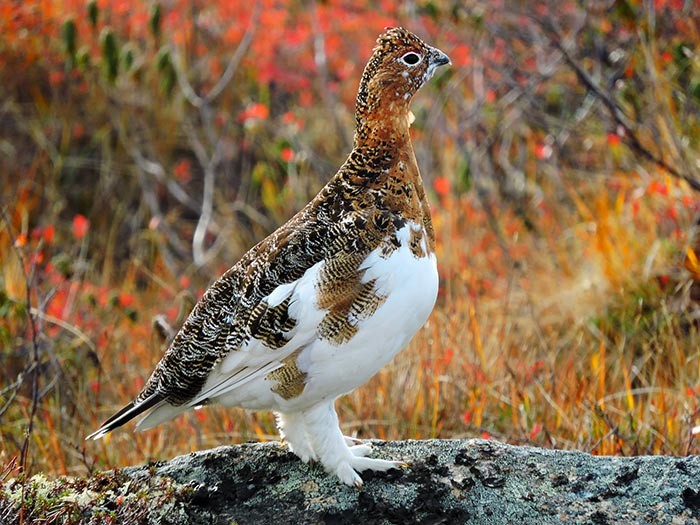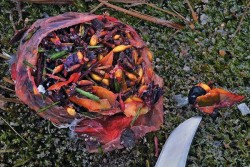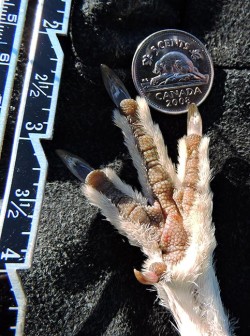Temperatures may plunge to 50 degrees below zero on Nunavik Quebec’s Ungava peninsula. But there, at the northernmost edge of our northern woodlands, lives a species of bird that toughs it out in the winter rather than flying to a warm-weather second home.
Willow ptarmigan (Lagopus lagopus), a chicken-size member of the grouse family, is superbly adapted for winter’s hardships. This species inhabits a circumpolar range of arctic, sub-arctic, boreal, and alpine habitats worldwide; in the Northeast, you’d have to drive about 15 hours north of the US-Canada border to get into good ptarmigan country. Once there, these endearing birds are easily observed foraging on tender leaves, twig tips, buds, and whatever berries may still be available within the shelter of willow, dwarf birch, and black spruce thickets. Their call – a nasal-sounding erk…erk…erk, erk, erk, erk, erk gobeck’, gobeck’, gobeck’ – is comical to listen to, and to try to imitate.
Willow ptarmigan’s Latin name means “hare-like feet.” And in winter, the soles of their feet become so completely covered with feathers that they do, in fact, resemble snowshoe hare feet. The feathers provide protection from the cold and snowshoe-like flotation. A physiologist from the University of Alberta, E.O. Höen, reports that the sole feathers increase the bearing surface of the ptarmigan’s feet by four times, which increases by 50 percent the bird’s ability to stay on top of the snow. In addition, I am convinced that the structure of the legging feathers contributes to this winter-hardy bird’s ability to stay on top of the snow. Legging feather tips, which extend to the ground, serve as a strong but flexible edge to the foot, comparable to the frame of a snowshoe. Interlocking feathers covering the bottoms of the feet are extremely lightweight and perform like the webbing of a snow-shoe’s interior. The feathers also significantly reduce conductive heat loss from the foot itself. Long claws extend beyond the feathered foot and provide traction when needed.





